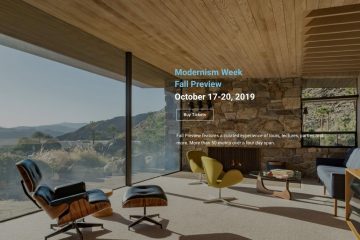Even though they were not widely recognized, female designers were prevalent in the twentieth century. If they were acknowledged at all, their name was always paired with a male counterpart. Yet women are responsible for creating some of the most recognizable pieces in mid-century design. One of the most iconic chairs from the mid-century was crafted by Charles and Ray Eames.
While Charles was a pioneer in his own right, he delighted in giving his wife, Ray, the credit she deserved for their work- “Anything I can do, Ray can do better.” Ray’s artistic ability, coupled with her “insatiable curiosity and pleasure in all manner of objects and environments”, led to her notable contributions in furniture, textiles, and architecture of the mid-century.
“What works good is better than what looks good, because what works good lasts.” – Ray Eames
Who is Ray Eames?
Born Ray Kaiser in 1912 in California, Ray was always passionate about art, ballet, and structure. She spent years studying under famous artists, from Lu Duble to Hans Hofmann. However, her mother became ill and Ray left the Hofmann studio to care for her until her death. Afterward, and at the suggestion of a friend, Ray moved to Michigan to join the Cranbrook Academy of Art. This is where she met her partner in life and in art- Charles Eames.
A Match Made in Design Heaven
As Ray began her work at Cranbrook Academy, she partnered with Charles Eames and Eero Saarinen in preparing designs for the Museum of Modern Art’s Organic Furniture Competition. The molded plywood chairs they collaborated on won 2 first prizes. Presently, these chairs are still being manufactured today by Herman Miller and are available for purchase demonstrating the timelessness of the design. Soon after, Charles and Ray married and moved to California where they continued their work.
Commissioned by the Navy
Together, the Eames would take the furniture world by storm and their designs would also aid the United States Navy. During World War II, the US Navy asked Charles and Ray to develop leg splints for injured soldiers. The old leg splints were made entirely of metal and were awkward, heavy, and expensive. However, access to resources and military technology gave the couple a chance to perfect their plywood molding technique. They were able to create truly ergonomic, lightweight, and functional shapes with this technique. Charles and Ray were later asked to create pilots’ seats and stretchers as well. Many lives were saved because of the ingenuity of the Eames.
Designing the Best for the Most
Charles Eames is quoted as once saying, “The role of the designer is that of a very good, thoughtful host anticipating the needs of his guests.” Charles and Ray epitomized this attitude in their molded plastic, fiberglass, and wood shell chairs, in addition to their wire chair. They knew what people wanted from a chair: a simple, yet comfortable form that fits any body and every place. Prominent architectural critic Esther McCoy once called their molded plywood chair “the chair of the century”.
Production of these chairs, along with many other designs by Ray and Charles Eames, was given over to Herman Miller, Inc. where they are still available today.
More than Furniture
Not only did the world of furniture design change, but Ray Eames, along with Charles, had several other ventures. True to their love of all things mid-century modern, the Eames’ California home was part of the Case Study House Program. Additionally, they also opened an experimental design studio, where they produced film, architecture, and their transformational chairs.
Unique Designs that Stand the Test of Time
Ray Eames is most well-known for the molded chairs she and Charles created for offices and homes. Her artistic flair also allowed her to dream up fun and creative children’s furniture. Her most celebrated children’s chair is in the shape of an elephant. The neat, sophisticated lines of this chair make it almost too pretty to sit on. However, this chair has only recently been enjoyed by children. Only 2 prototypes were built in 1946, and had been on display in New York’s Museum of Modern Art until 2007. In celebration of Charles’ 100th birthday, a limited supply of these elephants were produced in plywood. Soon after, a plastic version was released and has been delighting children all over the world. Ray’s free spirit lives on in the designs that still work, and work well, to this day.
Enjoy Your Own MCM Pieces
Interested in the simplicity and functionality of mid-century modern? Find the perfect piece to begin, or add to, your own art collection, by visiting our GALLERY. We have beautiful, original mid-century modern pieces by Raymond Loewy, Vincent Raney, and many others.





